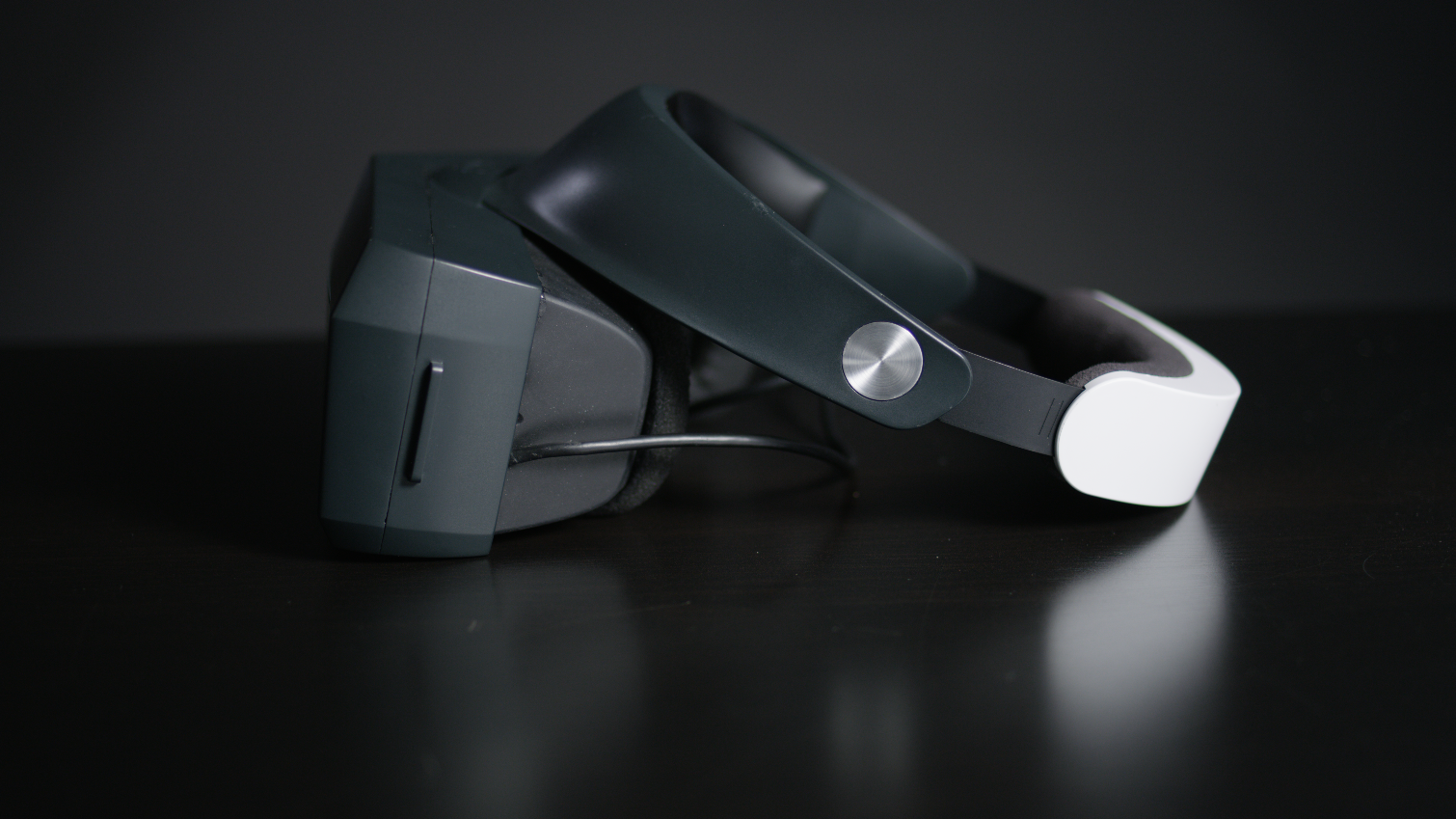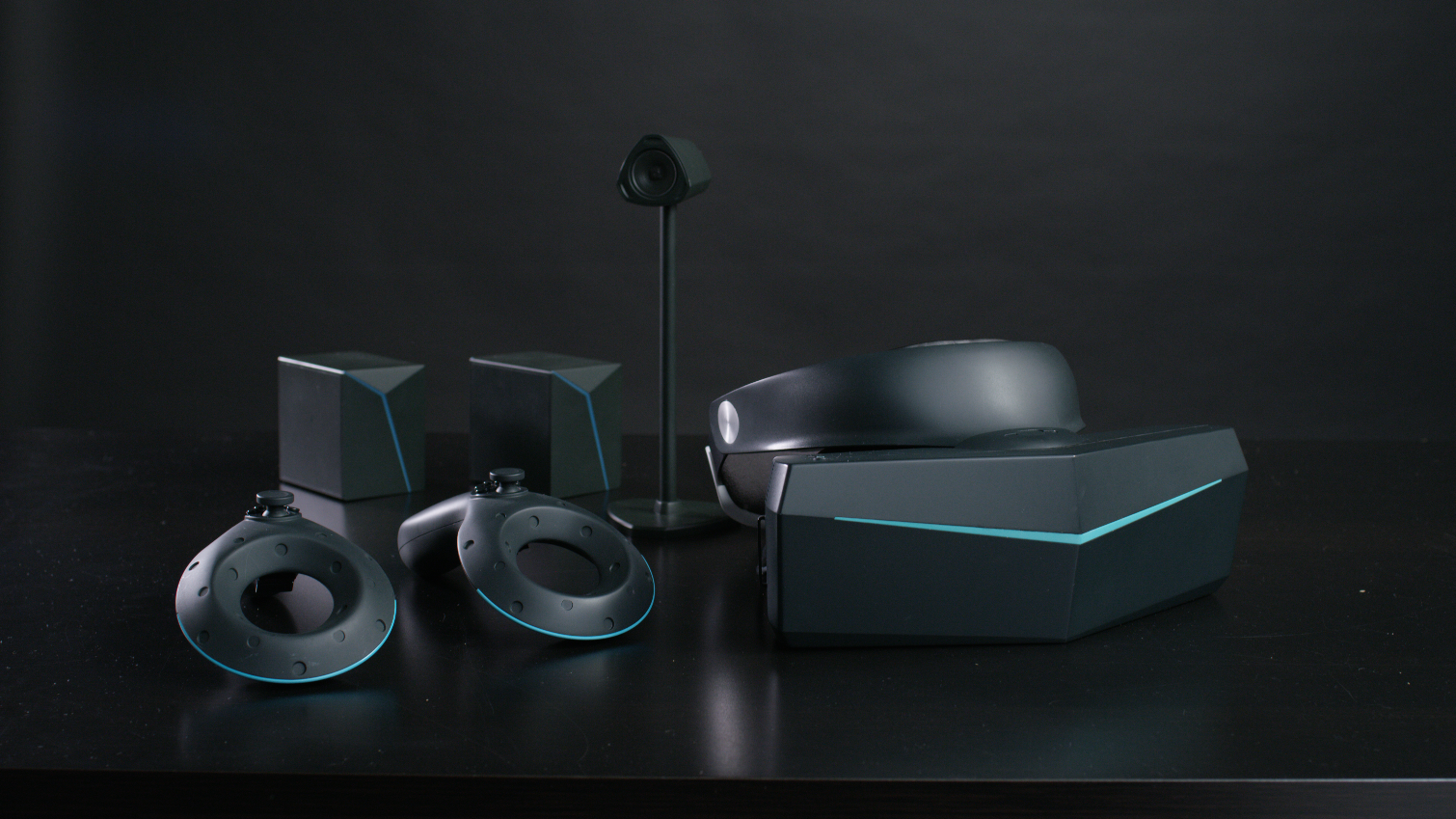Pimax 8K HMD Available For Preoder Through Kickstarter (Update: A New SKU Emerges)
Update, 9/19/17, 12:20pm PT: Pimax originally announced that it would release two versions of the headset--a 5K version and an 8K version. Hours before the Kickstarter campaign went live, Pimax added a third option called the Pimax 8K X, which offers 8K resolution at 90Hz without the need for the internal scaler found in the Pimax 8K. Pimax said the higher-end, more expensive 8K X model requires at least a GTX 1080 Ti or possibly a next-generation GPU to power it.
Evidently, the demand for Pimax's 8K VR headset is high. Less than two hours after its launch, the campaign exceeded its $200,000 funding goal, raking in more than $225,000 so far. The 5K version of the Pimax headset isn’t selling well, but both 8K versions are moving quickly, including more than 300 of the $450+ Pimax 8K units, and nearly 100 of the $650+ Pimax 8K X units.
Original article, 9/19/17, 10am PT:
Pimax is getting ready to shake up the home VR HMD market with its upcoming ultra-high-resolution headset. If you’ve been holding out for higher pixel counts before buying into VR hardware, you’ll soon have one less excuse. Pimax launched a Kickstarter campaign to offer pre-orders for its upcoming 8K VR headset, and it plans to ship the first run of them in December.
The Oculus Rift and HTC Vive offer incredibly immersive experiences, but there’s certainly room for improvement. Most notably, the Vive and Rift suffer from less than ideal resolution. Both HMDs offer 2140x1200 pixels, which provides respectable clarity, but if you try, you can see the space between pixels. The Rift and Vive also have narrow fields of view that restrict your peripheral vision.
The Pimax 8K HMD doesn’t suffer the same resolution and FOV limitations that the Rift and Vive do. Pimax installed two OLED displays in its upcoming 8K headset to offer independent 4K visuals for each eye. The Rift and Vive also offer two-screen setups, but their 1920 x 1200 display resolution pales in comparison to the 3840 x 2160 pixels that Pimax offers per eye. Pimax is also offering a 5K version of the headset that includes two 2560x1440 displays rather than two 4K displays, which is still a big upgrade from the first-generation VR HMDs.
Because the displays feature a 16x9 aspect ratio, the two side-by-side panels offer an incredibly wide 200-degree field of view. We haven’t tried the Pimax 8K headset yet, though we have tried an ultra-wide HMD, and we can attest to the configuration’s effectiveness. Two years ago, we tried the StarVR HMD for the first time, and we can say from experience that having peripheral vision in VR is a game changer.
Get Tom's Hardware's best news and in-depth reviews, straight to your inbox.
Of course, higher resolution panels mean more work for the host computer that must deliver the content to the displays. The Rift and Vive both feature 90Hz displays and require a constant 90fps to deliver smooth gameplay. Hitting 2160x1200 @ 90fps is already a tall order, but that’s a light workload compared to the Pimax 8K’s needs. The displays found in the Pimax headsets can operate at 75Hz or at 90Hz, which should provide sub-15ms motion to photon latency—that is, if your computer can deliver the required performance.
Pimax claimed that a GTX 980 or an R9 Nano can deliver the framerate necessary to power the headset, but we would have to see that to believe it. A GTX 980 may work well with the Pimax 5K, but we would suggest a 1080Ti or better for the 8K variation after learning what we know about VR game performance.
Oculus and Valve use variations of reprojection technology to compensate for low performance, but Pimax took a different approach. The Pimax 8K headset features Pimax Brainwarp technology, which doubles the rendering performance by intentionally skipping every second frame on alternating eyes. This effectively means that your GPU must render a single 4K image for every frame versus two 4K images per frame. Pimax said Brainwarp technology also doubles the refresh rate from 75Hz/90Hz to 150Hz/180Hz to fill in the missing frames, although it did not explain how that process works.
The Pimax 8K and 5K headsets are compatible with multiple tracking technologies. Pimax developed a single camera tracking system called PiTracking, which the company said offers 360-degree tracking fidelity. The headset is also compatible with Valve’s SteamVR Lighthouse tracking system, including SteamVR-compatible peripherals such as the Vive wand controllers or Valve’s Knuckles controllers.
The Pimax 8K and 5K headsets are also modular, and Pimax is developing a variety of accessories, including an inside-out tracking module powered by Leap Motion’s hand tracking technology.
Pimax's Kickstarter campaign started today, and it’s offering a selection of discounted bundles to choose from, starting at $399.
The first batch of Pimax 5K and 8K VR HMDs should ship in December. The early bird package includes support for light house base stations and controllers, but it doesn’t include those components in the bundle. Pimax suggested buying these bundles if you already have a Vive headset. If you want the Leap Motion tracking module with your headset, you’ll have to wait for the second run, which Pimax expects to ship in February 2018. The company is also offering Deluxe bundles for the February shipment run thtat include two base stations and two tracked controllers.
| Technical Specifications | Pimax 5K VR HMD | Pimax 8K VR HMD |
|---|---|---|
| Field of View | 200 degrees | |
| Resolution | 2*2560x1440, 16.6 million pixels | 2*3840x2160, 7.4 million pixels |
| Screen | Customized low persistence liquid (CLPL) Display | |
| Motion To Photon Latency | <15ms | |
| Refresh rate | 75/90Hz per eye (support 150/180Hz with Brainwarp) | |
| GPU Requirements | GTX980/1070 or AMD R9 Nano, equivalent and above | |
| Interface | DisplayPort 1.4, USB 3.0 | |
| Experience | Seated VR, standing VR, room-scale positional tracking, hand Motion (optional) | |
| Audio | 2x3.5 mm audio jack, stereo sound earphones, integrated microphone | |
| Fit | Adjustable headset strap/headband, auto-demisting system, fits glasses/customized VR frame, IPD (Interpupillary distance) adjustment. |
Kevin Carbotte is a contributing writer for Tom's Hardware who primarily covers VR and AR hardware. He has been writing for us for more than four years.
-
uglyduckling81 2x 4k screens are not = to 8k. Pixel wise it's close to 6k.Reply
Unless I'm getting confused and it's actually 2x 4k per eye, in which case I stand corrected.
If that is the case, good luck driving 8k even with a dual 1080ti set-up. -
epdm2be Finally a smart move, a HMD with DisplayPort. I was stunned to see that current PC VR HMD's only use HDMI while Displayport has more bandwidth, which can drive higher resolution displays, and allows for longer cables. This is a headache as many of these high-end videocards haven't got enough HDMI ports.Reply
I thought of getting into it with Oculus'recent summer-offer but decided against it due to it's HDMI-connection (and the fact that my card's 2 HDMI ports are already used). Reading about how troublesome DP to HDMI adaptors might be I decided to wait.
IMHO both Oculus and HTC made a huge mistake by going for HDMI especially for a PC-connected HMD that requires a powerful GPU/system, of which most GPUs just have these unused DP-ports (which have certain advantages for VR). I assume that both companies future HMD units will be DP or HDMI+DP. If not then I'd might be tempted to go for these Pimax units instead. -
epdm2be I wondered but 1920x1080 for each eye. Thus 3840x1080 isn't that enough? I would think that FHD for each eye would give a nice picture and it is manageable with current cards, isn't it? Yes, these might be stupid questions but as a complete noop with regards to VR....Reply -
Diji1 ReplyI would think that FHD for each eye would give a nice picture and it is manageable with current cards, isn't it?
Manageable by video cards yes but it would lead to horrible image quality. Remember each screen is magnified so it's effectively right next to your eyeball so pixels become visible and very ugly at low resolutions. -
grimfox Reply20190761 said:2x 4k screens are not = to 8k. Pixel wise it's close to 6k.
Unless I'm getting confused and it's actually 2x 4k per eye, in which case I stand corrected.
If that is the case, good luck driving 8k even with a dual 1080ti set-up.
You are correct their "5k" is actually just 2.5k x2. As is their "8k," it's just 4k x2. This is misleading at least and false advertising in the worst. A true 8k HMD would have something like 3840x4320 displays for each eye.
Still I appreciate that they are pushing the boundaries of resolutions. I think they would have been further ahead giving is a new resolution moniker like 4K2 or 8k/2. But marketing probably got in the way.
-
kcarbotte Reply20190817 said:Finally a smart move, a HMD with DisplayPort. I was stunned to see that current PC VR HMD's only use HDMI while Displayport has more bandwidth, which can drive higher resolution displays, and allows for longer cables. This is a headache as many of these high-end videocards haven't got enough HDMI ports.
I thought of getting into it with Oculus'recent summer-offer but decided against it due to it's HDMI-connection (and the fact that my card's 2 HDMI ports are already used). Reading about how troublesome DP to HDMI adaptors might be I decided to wait.
IMHO both Oculus and HTC made a huge mistake by going for HDMI especially for a PC-connected HMD that requires a powerful GPU/system, of which most GPUs just have these unused DP-ports (which have certain advantages for VR). I assume that both companies future HMD units will be DP or HDMI+DP. If not then I'd might be tempted to go for these Pimax units instead.
The Vive breakout box has both HDMI and mini-DP ports. It doesn't come with a mini-DP cable, but you can use the DisplayPort on you graphics card to run the Vive headset.


